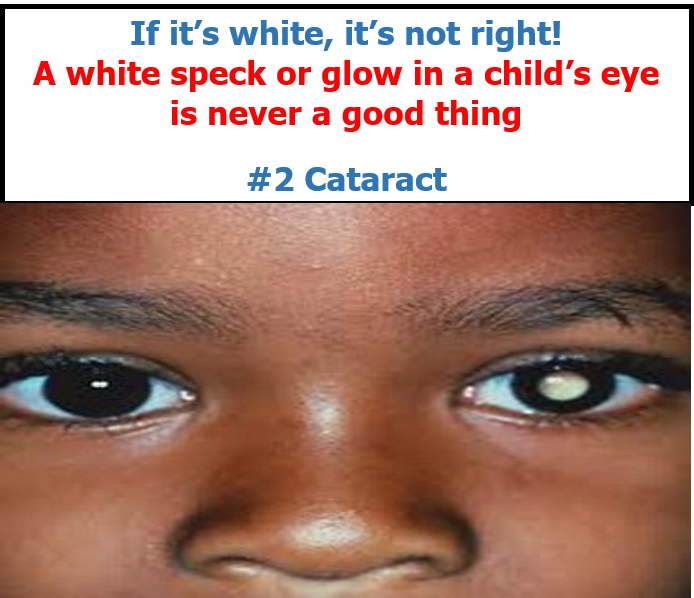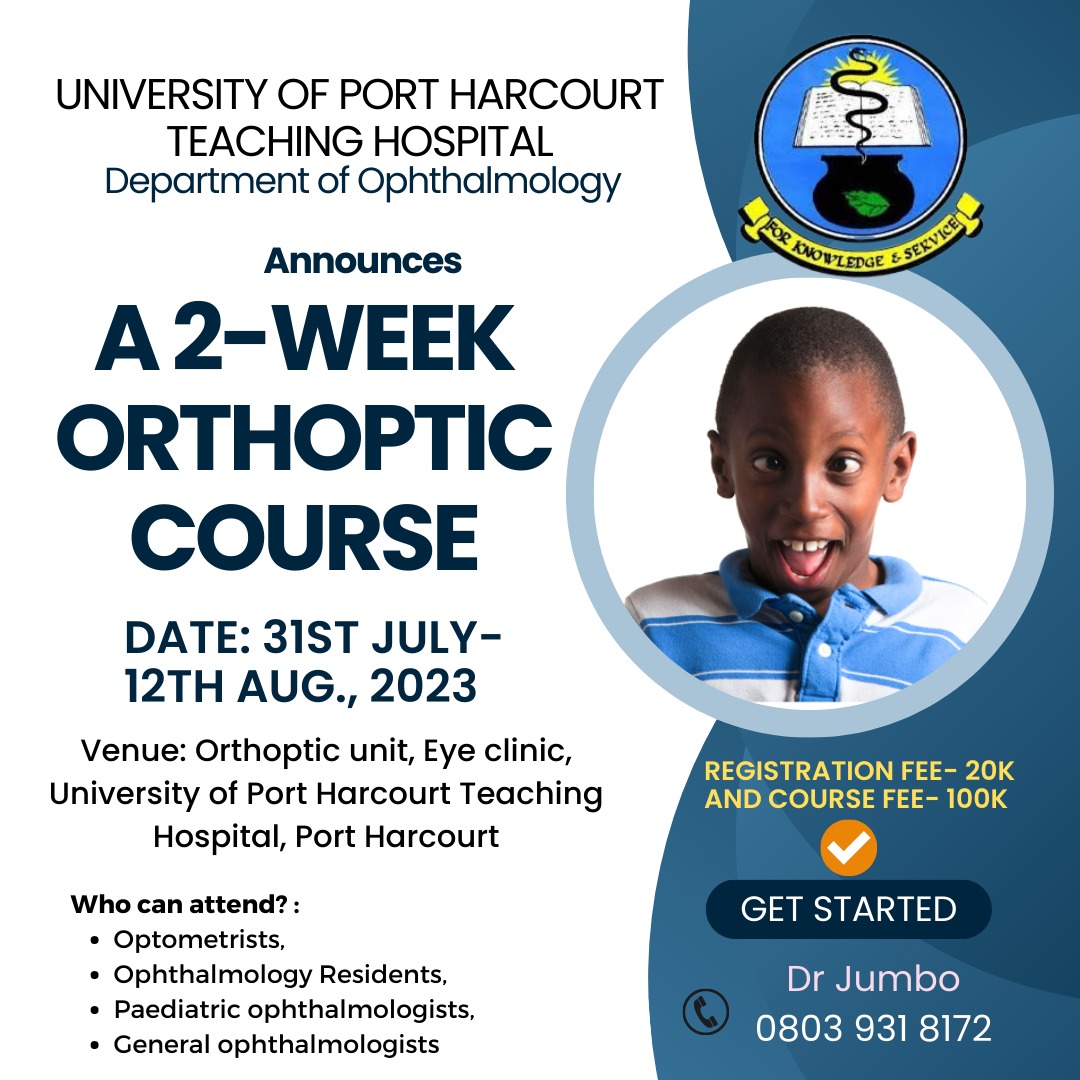The white speck
When Mama Nkechi noticed a white speck in her three-month old son’s eye, she was worried and tried to seek help. However, her neighbours and family members convinced her that the baby was still too small for anything to be done about it. When she finally saw an eye doctor eight months later, she found out it was cataract. Was she wrong to have taken their advice?
What is childhood cataract?
Cataract, an opacification of the usually transparent lens of the eye, occurs as a normal aging process in elderly people. However, it does occur in children. Childhood cataract is the commonest cause of blindness in children. It can affect one or both eyes.
Why is it a problem?
Cataract is one of the conditions that can appear as a white speck in a child’s eye. A WHITE SPECK IN A CHILD’S EYE IS NEVER A GOOD THING! Such a child should be evaluated and treated as soon as possible to avoid the development of amblyopia. In amblyopia, there is interruption of the coordinated development of the brain and eye. This result is that an eye that is seemingly normal, structurally, is unable to function optimally in future.
What can cause cataract in a child?
In many cases, the cause of cataract in a child may be unknown. But it may be due to:
- genetic mutations
- intrauterine infections in the mother (e.g. fever with rash during pregnancy)
- exposure of the mother to radiations such as x-ray during pregnancy
- use of medications not safe in pregnancy (e.g. phenothiazines, thalidomide, etc)
- birth trauma
- metabolic problems in the baby e.g. diabetes mellitus, galactosemia, e.t.c.
- prematurity
- trauma
At what age should a child with cataract see an eye doctor?
A child with cataract should see a an eye doctor as soon as possible. This is a classic case in which “a stitch in time" can literally "save the eye". The earlier a child with cataract is treated, the better the chances are of the child seeing with the affected eye(s).
Who should manage a child with cataract?
The management of a child with cataract is multidisciplinary and can be complex. An ophthalmologist, (preferably a paediatric ophthalmologist) should evaluate the child as soon as possible. A paediatrician may also evaluate in child to check if other parts of the body are affected as the heart and kidneys.
What is the treatment for childhood cataract?
The definitive treatment for childhood cataract is surgery. In expert hands, this is usually safe and vision can be restored. Removing a visually significant cataract promptly, and optimising the child's vision with spectacles or contact lenses if necessary are important to ensure good visual outcome for the child.
Last words
If you see a child with a white speck in the eye, advise the care giver to have the child evaluated by an ophthalmologist as soon as possible.




